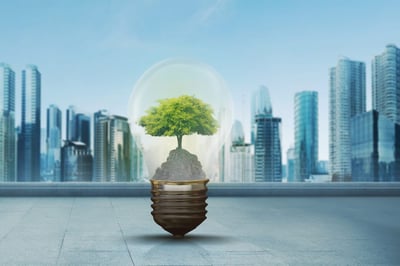The choices we make in the next decade will either lock us into a future of fossil fuel dependence or transition us toward a clean energy future.We all pay electric bills no matter our party affiliation. Many of us feel we pay too much — and for most of us, it’s true. One contributor to high electric bills is wasted energy.
To cut energy costs, you might have made changes around your home such as switching to light-emitting diode light bulbs, adding insulation, or replacing outdated appliances or heating systems. If so, you have already participated in energy efficiency, which simply means reducing waste.
Our country’s energy consumption would be 60% higher today without the efficiency investments made over the past four decades, as would the associated carbon pollution that causes climate change and threatens public health.
Most of these savings have been driven by better building codes, appliance standards and efficiency programs offered by our local utilities. These efficiency investments have paid off big time, saving Americans more than $800 billion in energy costs each year.
Energy efficiency drives job creation
Additionally, energy efficiency stimulates the local economy and creates jobs that cannot be outsourced. Today, energy-efficiency work supports 2.25 million jobs across the country.
Lower energy bills and jobs are just two benefits of reducing energy waste. Energy efficiency also reduces our dependence on fossil fuels that contribute to the climate crisis.
More than 9,000 fossil fuel power plants that generate electricity operate in the United States. The average age of those plants is more than 30 years old, which presents a huge opportunity for energy efficiency
and renewable energy to replace carbon-intensive fossil fuels.
Energy efficiency reduces the need to build new fossil fuel power plants and helps to more quickly retire power plants due for replacement. But if these aging units are replaced with more gas power plants that generate electricity, we will have locked ourselves into
fossil fuel dependence for at least 30 to 50 more years. The United States could meet more than 40% of its Paris climate agreement goals with energy efficiency alone, while simultaneously lowering customer energy bills.
Utilities continue to underinvest in energy efficiency despite its many benefits. This is the result of an outdated business model where utilities earn profits through the construction of new electric power plants instead of investing in cutting energy waste.
Some utilities even discourage energy efficiency by increasing the fixed fees customers must pay every month regardless of energy use. High fixed fees take away from customers’ ability to control energy bills because it increases how much they owe the utility before even flipping on a switch. High fixed fees affect us all but have a greater impact on the low-income, elderly, student or minority customers who spend a disproportionately high percentage of their income on energy bills while struggling to afford other critical household necessities like food, medicine and transportation. This needs to change.
If you pay an electric bill, you have a choice and a voice. Take the first step by looking into efficiency programs offered by your local utility and see how much you can save on your home or business energy bill. If efficiency programs are not offered, tell your utility to step it up. If your utility plans to build an electric generating gas-powered plant, ask your local or state leaders to instead require it to invest in energy efficiency and renewable energy.
Tech helps fuel better efficiency
Technological improvements now allow us to go even further with energy efficiency. Instead of simply focusing on using less energy, we can optimize our energy use to reduce carbon emissions. We can switch from using gas for heating and cooking to electricity and also electrify public and personal transportation. By interconnecting all of our energy use devices, algorithms can help us determine when and how we use energy to further reduce our carbon footprint and mitigate the worst impacts of climate change.
The choices we make — personally, locally and nationally — in the next decade will either lock us into a future of fossil fuel dependence or transition us toward a clean energy future.
Policymakers typically have the authority to approve such investments for a win-win: save consumers money, drive local job creation, lower energy bills for those who struggle most, and reduce carbon pollution that contributes to climate change. Let’s skip the gas plants and instead take advantage of renewable energy and cutting waste through energy efficiency. With energy efficiency, we can ensure our investments are spent wisely and lower our carbon emissions.
This article was originally written by Forest Bradley-Wright, energy efficiency director for the Southern Alliance for Clean Energy, and published by USA Today.


